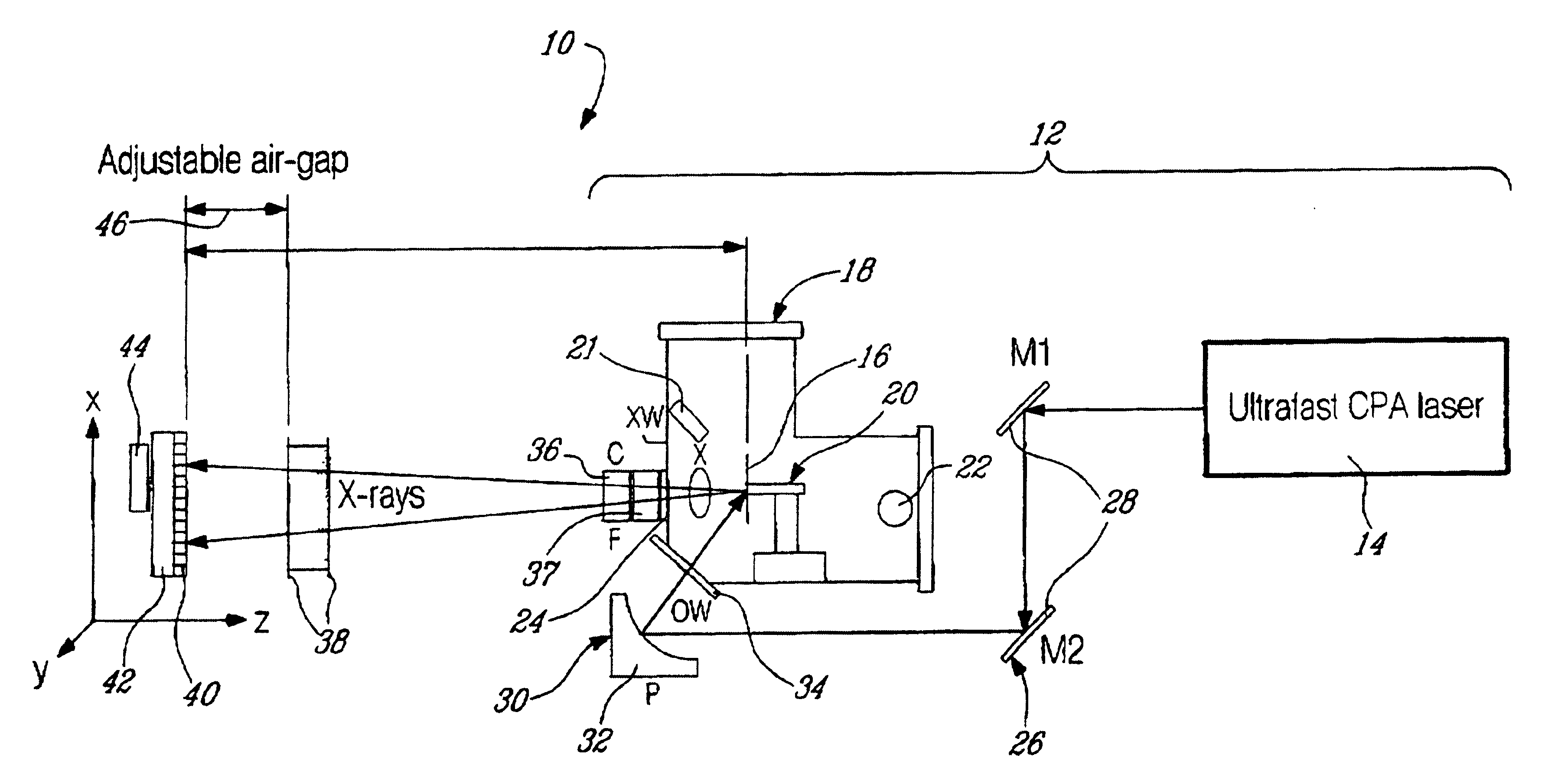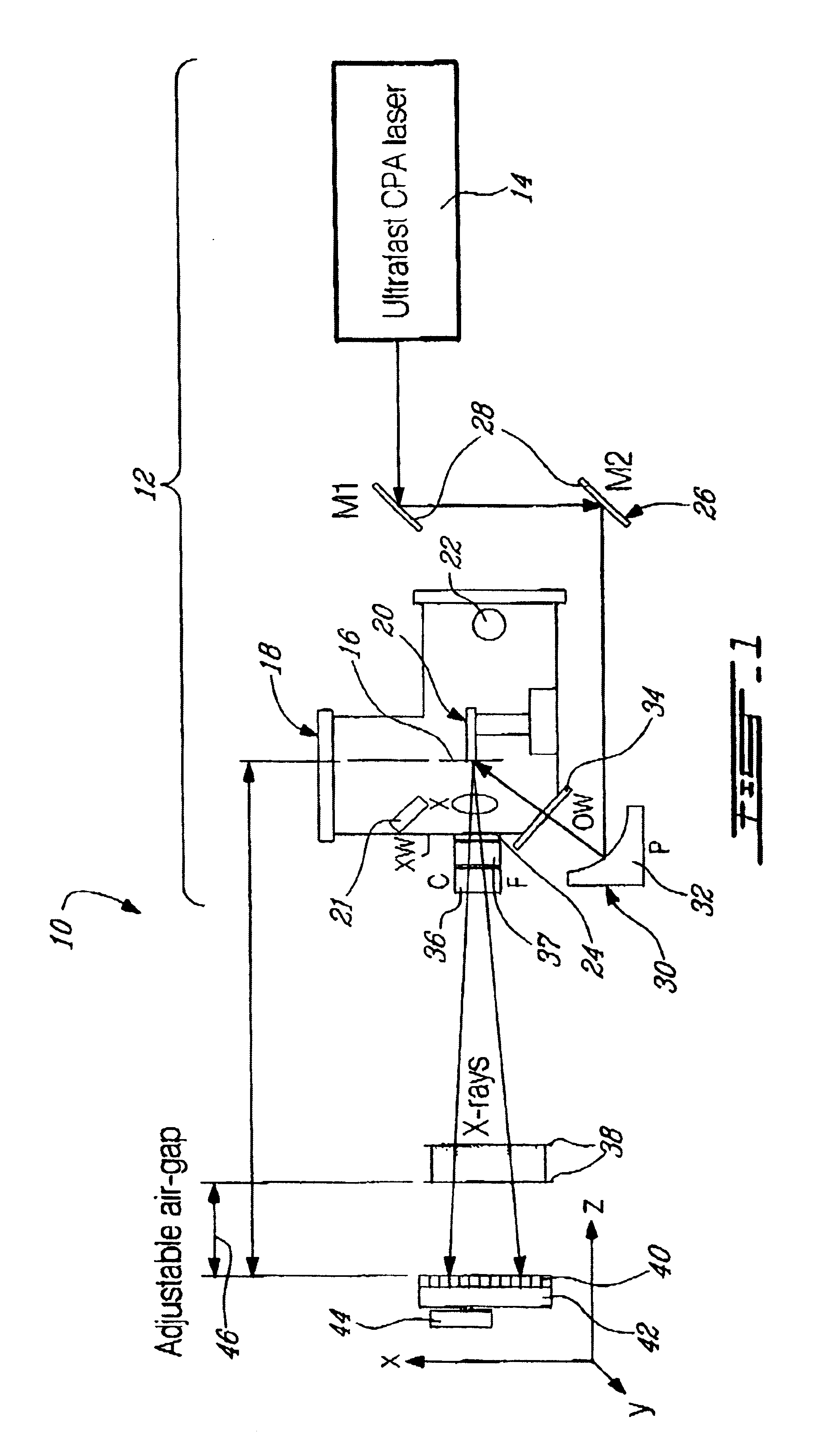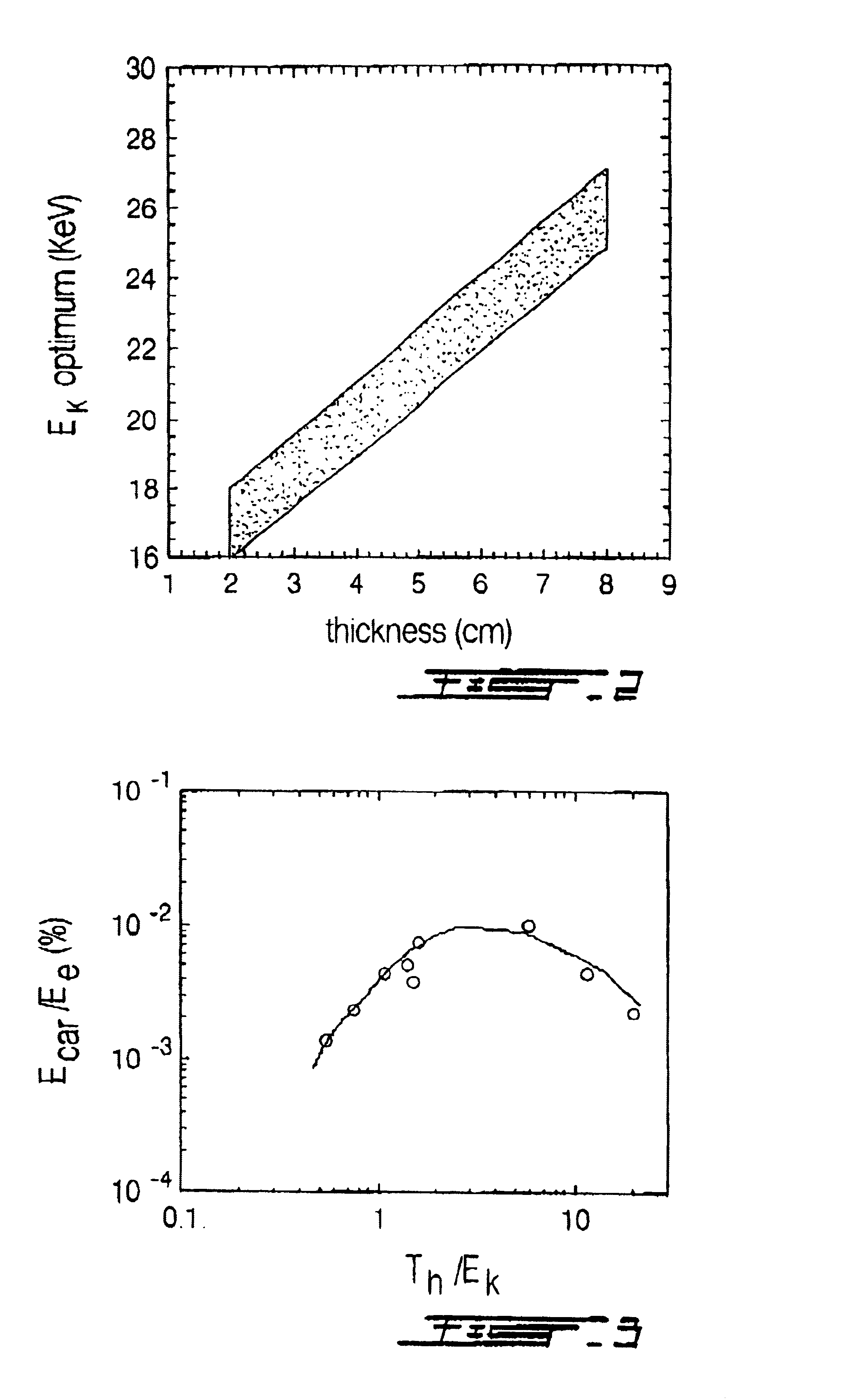System and method for generating microfocused laser-based x-rays for mammography
a laser-based x-ray and microfocus technology, applied in the field of x-ray production, can solve the problems of severe adverse effects, false positive or false negative results of mammography, and unnecessary additional imaging and biopsy
- Summary
- Abstract
- Description
- Claims
- Application Information
AI Technical Summary
Benefits of technology
Problems solved by technology
Method used
Image
Examples
Embodiment Construction
[0041]Turning to FIG. 1, an x-ray mammography system 10 incorporating a system for generating microfocused laser-based x-rays 12 according to embodiments of the present invention are illustrated.
[0042]The x-ray generator 12 is based on both a stationary ultra-fast CPA (chirped-pulse amplified) laser 14 and a solid target 16 with elemental composition so positioned as to be in the focal plane of The laser 14.
[0043]As it will be explained hereinbelow in more detail, the ultra-fast laser 14 and solid target 16 are chosen and configured so that interaction of a laser beam produced by the ultra-fast laser 14 with the solid target 16 produces suprathermal electrons that penetrates the solid target 16 in a spot whose size is comparable to the ultra-fast laser 14 focal spot size. This allows simultaneously optimizing the source size, the x-ray yield and the photon energy.
[0044]The target 16 is mounted in a movable target chamber 18 provided with rapid target / filter changer (not shown), a pr...
PUM
 Login to View More
Login to View More Abstract
Description
Claims
Application Information
 Login to View More
Login to View More - R&D
- Intellectual Property
- Life Sciences
- Materials
- Tech Scout
- Unparalleled Data Quality
- Higher Quality Content
- 60% Fewer Hallucinations
Browse by: Latest US Patents, China's latest patents, Technical Efficacy Thesaurus, Application Domain, Technology Topic, Popular Technical Reports.
© 2025 PatSnap. All rights reserved.Legal|Privacy policy|Modern Slavery Act Transparency Statement|Sitemap|About US| Contact US: help@patsnap.com



